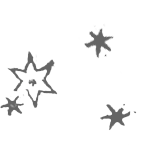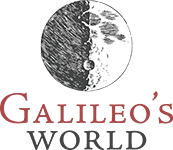Chemistry
Chemistry
Exhibit items on the subject of chemistry.
Exhibit Items
| 0 |
Tycho Brahe prints: Portrait (6); Copenhagen (7); Hven (8); Gardens (9); Uraniborg (10); Architectural plan (11) |
|
| 1 |
Astronomical Journal Brahe, Tycho (1586) On the Island of Hven, Tycho Brahe built a Renaissance research center called Uraniborg, “City of the Stars.” The first book printed on Tycho’s printing press at Uraniborg displays his motto, “looking up, I look down.” That motto symbolized his aim of coordinating the study of astronomy,... |
|
| 1 |
The Book on Air Hero of Alexandria, (1575) Once an altar is lighted, the temple doors open automatically. Hero fashioned all sorts of marvelous automata using steam, air pressure, hydraulics and falling weights. Devices included an automatic wine dispenser, siphons, garden fountains, engines, pumps, steam-powered toys, and magic tricks... |
|
| 1 |
On the Art of Fire Biringuccio, Vannoccio (1540) When Galileo needed to purchase plates of brass to make his engineering compass or commissioned glass to make better lenses, metalsmith, assayers and craftsmen in Venice employed operations similar to those described in Birunguccio’s metallurgical manual. |
|
| 2 |
Discourse on Floating Bodies Galileo, (1612) To provide entertainment at a dinner held by the Grand Duke of Tuscany, Galileo debated the Aristotelian physicist Lodovico delle Columbe on the topic of floating bodies. Galileo employed Archimedes’ mathematical analysis. |
 |
| 2 |
On the Two Worlds, namely the Major and the Minor Fludd, Robert (1617-1621) For Robert Fludd, the universe is a monochord, its physical structure unintelligible without an understanding of music. In another section of the book, Fludd depicts the universe as a Temple of Music. |
 |
| 2 |
On the Nature of Metals Agricola, Georg (1556) Agricola described early modern mining and metallurgy practices throughout the German speaking areas of Europe. The remarkable illustrations make this work a paramount example of how abundant visual representations in the Printing Revolution transformed science and technology. |
|
| 2 |
Natural Magic, 1589 Porta, Giambattista della (1589) In this poster-sized work, the first publication of observations made with a microscope, Cesi and Stelluti studied the anatomy of the bee. The text includes classical references to bees as well as new knowledge, integrated in a tabular outline. |
|
| 3 |
Considerations on Galileo's Discourse on Floating Bodies Pannochieschi, Arturo (1612) Pannochieschi, head of the University of Pisa, defended Columbe, widening the debate over floating bodies and exemplifying the Aristotelian physicists’ reaction to Galileo’s use of Archimedean methods. In response, Galileo published a 2d ed. |
|
| 3 |
On Pneumatics Porta, Giambattista della (1606) Della Porta explored various ideas for steam powered machines following the example of Hero of Alexandria. In antiquity, Hero fashioned marvelous automata using steam, air pressure, and hydraulics. |
|
| 3 |
Natural Magick, 1658 Porta, Giambattista della (1658) In Natural Magick, della Porta described an optical tube he designed to make far things appear as though they were near. The field of optics was often associated with magical tricks and illusions, and for that reason sometimes held suspect among non-mathematicians. |
 |
| 4 |
Response to the Opposition of Lodovico delle Colombe Galileo, (1615) Some of Galileo’s most avid opponents were Aristotelian physicists who, lacking training in mathematics, were unable to refute Galileo’s arguments. |
 |
| 5 |
Galileo Thermoscope replica, National Weather Center Galileo’s thermoscope, ancestor to the thermometer: Galileo pioneered scientific investigations with the thermoscope along with his two Paduan friends, Giovanni Sagredo and Santorio Santorio. |
|
| 5 |
Collected Works Paracelsus, (1603) Nieremberg saw an unpublished manuscript of Hernandez. Many of his descriptions of plants and animals relied upon Hernandez and other sources from Mexico and Peru. In classification, Nieremberg retained Hernandez’ use of native Nahuatl names. |
|
| 5 |
On the Snowflake, or the Six-Angled Crystal Kepler, Johann (1611) Kepler’s contributions reached far beyond the realm of astronomy, to meteorology, mathematics, geology, mineralogy and crystallography. Kepler published this 24-page pamphlet, a study of the snowflake, as a New Year’s greeting for a friend. |
 |
| 5 |
Phosphorescent Rock, or, On the Light of the Bolognese Stone Liceti, Fortunio (1640) Galileo studied the “Stone of Bologna” or “solar sponge,” produced by alchemists from calcining spar (barium sulfide), which glows in the dark. Galileo inferred from its cool luminescence that light is not the same as heat, but a distinct entity, contra Aristotle. |
 |
| 6 |
Galileo Thermoscope replica, Bizzell Memorial Library Galileo’s thermoscope, ancestor to the thermometer: Galileo pioneered scientific investigations with the thermoscope along with his two Paduan friends, Giovanni Sagredo and Santorio Santorio. |
|
| 6 |
Essays on Natural Experiences, 1666 Accademia del Cimento, (1666) The Academy of the Lynx (Accademia dei Lincei) dissolved after the death of its founder, Prince Federigo Cesi. In its place, Grand Duke Ferdinand II established the Academy of Experiment in Florence, which carried further the research program of Galileo. |
 |
| 6 |
The Assayer, early state Galileo , (1623) The crest of the Barberini family, showing three busy bees, appears at the top of the frontispiece. Galileo’s supporter, Cardinal Maffeo Barberini, had become Pope Urban VIII. The election of Barberini seemed to assure Galileo of support at the highest level in the Church. |
 |
| 6 |
The Book of Meteorology Paracelsus, (1566) Paracelsus in this book attacked Aristotelian philosophy, arguing that an experimental understanding of chemical processes would hold the key to advances in meteorology. |
|
| 7 |
Essays on Natural Experiences, 1667 Accademia del Cimento, (1667) The Academy transformed the thermoscope into the thermometer by adding a graduated scale (which had been done by Galileo and his friends) and by sealing the tube to make it independent of air pressure. |
|
| 7 |
The Assayer, later state Galileo , (1623) Although Galileo eloquently championed mathematical methods in science, the main target of his wit and sarcasm in The Assayer was Grassi, a fellow astronomer, whose mathematical methods proved that comets move above the Moon. |
|
| 7 |
Forecasts Paracelsus, (1536) Woodcuts adorn the top of each page in this “astro-meteorology,” a fusion of meteorology, astronomy, chemistry and medicine containing forecasts for the next 24 years. |
|
| 7 |
Treatise on Fossil Mineral Wood Stelluti, Francesco (1637) The Academy of the Lynx emblem appears prominently on this title page. Although Stelluti once believed that fossils resembling wood originated from buried tree trunks, Cesi persuaded him otherwise. |
|
| 8 |
Essays on Natural Experiences, 1701 Accademia del Cimento, (1701) The Academy crafted a hygrometer to measure humidity in the air. They improved the barometer, and conducted many experiments with air pressure. The Academy also experimented with light and phosphorescence, radiant heat, the velocity of sound and many other topics. |
|
| 9 |
Galileo Thermoscope replica, Bird Health Sciences Library Galileo’s thermoscope, developed in the context of pneumatic engineering, was an ancestor to the thermometer. Galileo pioneered scientific investigations with the thermoscope along with his two Paduan friends, Giovanni Sagredo and Santorio Santorio. |
|
| 10 |
Curious Technology Schott, Gaspar (1664) Schott was among the first to report the “Miracle of Magdeburg,” the sensational story of Otto von Guericke’s public demonstration of the reality of the vacuum. Von Guericke bolted two large hemispheres together, then evacuated the air inside them with his air pump. |
 |
| 11 |
New Experiments von Guericke, Otto (1672) In this work, von Guericke explained the design of his air pump and recounted additional experiments conducted with it. He employed the barometer to forecast the weather, and invented an electrostatic generator. |
|
| 12 |
New Experiments Physico-Mechanicall, Touching the Spring of the Air Boyle, Robert (1660) Boyle, who heard of von Guericke’s experiments via Schott, retained Robert Hooke to construct a similar air pump for him. Boyle’s experiments supported his “corpuscular” view of matter, that air is comprised of particles in motion. |
|
| 13 |
Opticks Newton, Isaac (1704) Newton’s contemporaries may have first heard of him through articles in the Philosophical Transactions of the Royal Society of London. There he reported his experiments with prisms on the nature of light and color in the atmosphere. |
|
| 14 |
Meteorological Essays Dalton, John (1793) Dalton defined the law of partial pressures in the course of his meteorological research. Three years later, his New System of Chemical Philosophy (Manchester, 1808) presented his atomic theory and provided a way to calculate the relative weights of elements and compounds. |
 |





